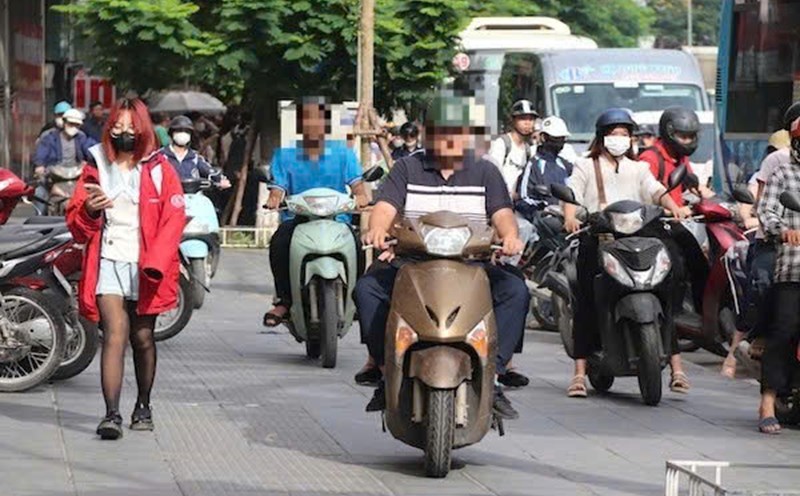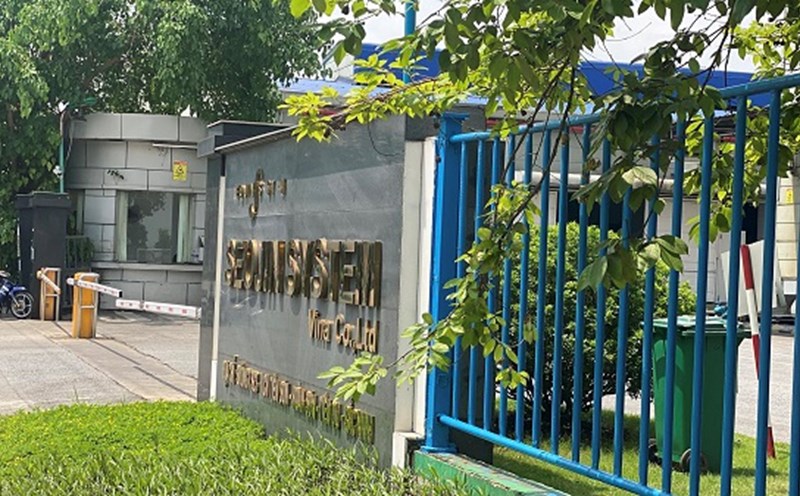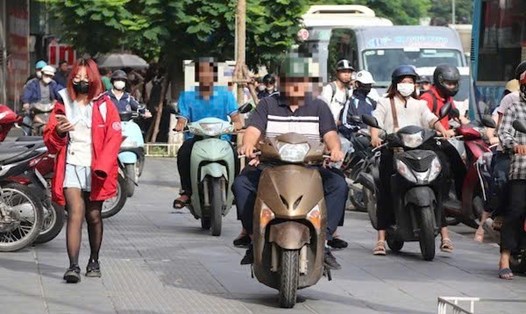Promoting practical application
The policy of limiting and moving towards stopping motorbikes in Hanoi's inner city districts has been set out since 2017, with the goal of gradually controlling personal vehicles, reducing traffic congestion and environmental pollution.
At a working session with the Vietnam Association of Motorcycle Manufacturers (VAMM) on June 9, Chairman of the Hanoi People's Committee Tran Sy Thanh affirmed that this plan cannot be delayed forever. According to Mr. Thanh, the steps will be taken cautiously, taking into account specific economic, social and cultural conditions, but not stopping or delaying the deadline.
According to the Chairman of the City People's Committee, the negative impacts of the large number of motorbikes existing in Hanoi are undeniable, from traffic congestion to increasingly declining air quality.
There has been careful preparation
In addition to maintaining a roadmap to limit motorbikes, Hanoi is also clearly demonstrating its determination in preparing alternative conditions, especially developing a public transport system and vehicles using clean energy.
Speaking to Lao Dong Newspaper, Mr. Thai Ho Phuong, Director of the Hanoi City Traffic Management and Operation Center, said that in the near future, Hanoi and the whole country will tighten emissions of cars in circulation. More importantly, buses will gradually switch to electric buses to ensure practical measures when limiting motorbikes to the inner city.
The city is synchronously implementing many solutions to reduce pressure on transport infrastructure and improve the environment. Currently, Hanoi has a Project to develop the overall bus network, setting goals to improve service quality, increase transportation output and gradually switch to electric buses and vehicles using green energy.
Meanwhile, the urban railway system, a pillar of the public transport network in the future, is also focused on investment. By 2030, Hanoi plans to complete 96.8km of urban railway; by 2035, it will increase to nearly 400km and by 2045, it will reach nearly 600km. These are figures that demonstrate the city's determination to develop a modern public transport system capable of replacing private vehicles.
Along with that, accompanying utilities are also being urgently deployed. From September 2, the city will put into operation electronic ticket connections between public transport types such as buses and urban railways. A series of bus shelters are also being newly invested in and modernized in the period of 2026 - 2028 with about 1,150 new or replacement stops.
Not only with the efforts of the State, in recent times, many businesses, especially the private enterprise sector, have pioneered in converting to electric buses.
People in Hanoi and some provinces and cities across the country have an additional choice for safe, civilized, and environmentally friendly travel.
With a team of well-trained drivers and attendants, Vinbus always receives an average annual customer satisfaction index of over 90%. That is a valuable recognition and also a motivation for Vin bus to continue to improve quality every day.
In June, Vin bus continued to launch an additional bus route No. 43, making the route connecting Dong Anh area with Hanoi's inner city easier. This is the 17th electric bus route deployed by Vin bus in Hanoi, continuing to expand the capital's green and sustainable transport network.
It can be said that limiting motorbikes to the inner city is for the highest goal of protecting the environment and people's health. Together with the State, many pioneering enterprises will contribute to putting this policy into practice.











